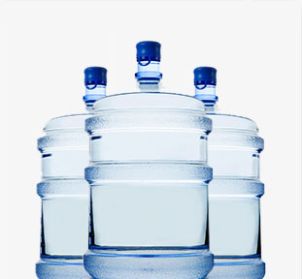
What Are Under Sink Water Filters and How Do They Work?

There’s nothing more refreshing than a cool drink of water. All you should have to do is grab a glass, turn on the tap and enjoy.
Unfortunately, for many municipal and well water users across North America, it’s not that easy. Instead, people find themselves worrying about odd odors, unpleasant tastes and even contaminants like lead and arsenic.* You shouldn’t have to stress out every time you turn on the tap.
Luckily, there’s a simple, effective way to enjoy your drinking water again: an under sink water filter. Here’s everything you need to know about these systems, how they work and how to get one for your home.
What Are Under Sink Water Filters?
An under sink water filter may also be called a drinking water system. That’s because it filters water right at the tap so you can count on a clearer, better-tasting drink every time. Unlike faucet-mounted filters, these systems are installed right under your sink — which also means they don’t take up space in your fridge like pitcher filters.
 When comparing under sink water systems to other options, you should also consider whole house water filters vs. under sink filtration. The former is a point-of-entry system, which means water is filtered where it enters your home, while the latter is called “point-of-use” because it works at a direct water access point (like your kitchen sink). The main difference is that whole house filters typically are designed to address specific problem water issues, such as chlorine, sulfur, iron or sediment, while under sink filters can address a broad range of potential water issues.
When comparing under sink water systems to other options, you should also consider whole house water filters vs. under sink filtration. The former is a point-of-entry system, which means water is filtered where it enters your home, while the latter is called “point-of-use” because it works at a direct water access point (like your kitchen sink). The main difference is that whole house filters typically are designed to address specific problem water issues, such as chlorine, sulfur, iron or sediment, while under sink filters can address a broad range of potential water issues.
How Do Under Sink Water Filters Work?
Many under sink water filters work through a process called reverse osmosis. As the name suggests, reverse osmosis is essentially the opposite of osmosis.
To visualize osmosis, imagine a container that’s split down the center. There’s a diluted solution on one side and a concentrated solution on the other, and in the middle is a semipermeable membrane. During osmosis, the diluted solution spontaneously moves through the membrane and into the concentrated solution, forcing the concentration to equalize. This process happens all the time in nature and even in your own body.
Reverse osmosis is different in one big way: While osmosis is passive, reverse osmosis is forced. That means the solution — in this case, your tap water — is being propelled against a semipermeable membrane at high pressure. In this process, particles as small as a single atom can be filtered.
Luckily, you don’t have to be an expert on reverse osmosis to benefit from an under sink water filter. The process happens automatically, all without you lifting a finger. Here’s how it works:
- Water is pre-filtered. Your under sink system takes in water and uses a pump to feed it through an initial filter. This process reduces the presence of sediment particles like rust and dirt while addressing chlorine odors, unpleasant tastes and more.
- Reverse osmosis occurs. Once the pre-filtration step is complete, water flows to your system’s reverse osmosis chamber. This chamber houses the semipermeable RO membrane. Your water is forced forward at high pressure, and the membrane acts like a net to trap certain contaminants and filter them out of your water supply. Different systems have different degrees of accuracy at this stage; for example, the high-capacity membrane in Culligan RO systems can reduce up to 95% of substances.
- Your water is filtered again. Although this step isn’t offered by all systems, a good under sink filter allows you to add specialty filtration to the overall process. For example, some Culligan systems can utilize a mineral boost cartridge that could increase your water’s pH, creating an almost limitless supply of alkaline water. You could also install Culligan’s Total Defense cartridge to address lead, mercury and certain other contaminants.
- The wastewater is drained. While your water is going through the final filtration stages, your under sink system is draining waste water. This waste is created during the reverse osmosis process. Some systems are designed to waste less water, so look for high-efficiency filtration solutions that don’t drive up your water bill. (Culligan’s Smart Aquasential RO and Aquasential RO systems are the world’s most efficient.**)
- Filtered water is stored. Although some tankless reverse osmosis systems skip this step, most store your filtered water in an attached tank. That way, your cleaner, purer-tasting water is ready to go at a second’s notice.
- You turn on the tap. Finally, it’s time for a drink. The system might even use one more filter time to further improve taste before the water hits your glass.
Do I Need an Under Sink Water Filter?
Here are just a few reasons you might choose an under sink filter for your home:
- Accessibility: You’ll have filtered water on tap whenever you want it.
- Placement: Under sink filters don’t take up space on your countertop or in your fridge. They also aren’t vulnerable to bumps or dents like faucet-mounted filters.
- Functionality: These systems are more comprehensive than standard pitcher, fridge or faucet-mounted filters. They quickly and effectively address taste, odor and appearance issues as well as specific contaminants including lead, mercury, chlorine and more.
- Price: While they may be more expensive upfront, under sink systems can actually help you save in the long run because they don’t need filter replacements as frequently as simpler systems like kitchen faucet filters. You also won’t have to spend money on single-use water bottles.
- Adaptability: Many under sink systems can have different filters installed. That means you can personalize the filtration process to your specific preferences and water issues.
- Smart features: A smart filter can send reports to your phone, helping you keep track of water consumption, filter change needs and contaminants reduced.
Simply put, an under sink filtration system does the work for you. All you have to do is turn on the tap and enjoy your drinking water.
How Much Do Under Sink Water Filters Cost?
Under sink water filtration systems can have an array of price points. The overall cost depends on factors including how comprehensive the filtration is, the number and type of additional filtration stages or cartridges included, the system’s efficiency, whether smart functionality is included and more.
However, the right under sink system can actually help save money. For example, with Culligan’s Smart Reverse Osmosis System and the Culligan Connect App, you’ll have access to insights including how much you’re saving using a home filtration system versus purchasing single-serve plastic bottles. You can also track water consumption, receive alerts about filter changes, track contaminants reduced and more.
How Long Do Under Sink Water Filters Last?
The lifespan of an under sink water filter system depends on a variety of variables, including:
- How much water is used
- Your local water quality
- The specific system you choose
- The reliability of the equipment manufacturer
However, each system also has filters, and each filter has its own lifespan. Keeping up with regular replacements is key to helping your reverse osmosis system operate at full capacity. In general, filters should be changed annually, but some systems — like Culligan’s Aquasential® Smart Reverse Osmosis Systems or Aquasential® Reverse Osmosis Systems — have filters that can last two years. Meanwhile, the RO membrane should be checked annually and replaced every three to five years.
How Do I Choose the Best Under Sink Water Filter for My Home?
There’s a lot to consider when it comes to under sink filtration systems. If you try to guess which one is right for your home, you may end up with a system that doesn’t fully address your needs.
For this reason, the best way to choose a filtration system is to start by having a free, in-home water test and consultation with local water treatment professionals. These tests can give you all kinds of important information, including:
- Which contaminants may be present in your water
- Your water’s hardness levels
- What water quality issues could be causing issues like limescale buildup, spotty dishes, rust stains and other home problems
Once your water test is complete, you can use the results to choose the best under sink filtration system for your needs. If you find that you also need to address water hardness issues, don’t worry — under sink filters and water softeners can and should work together. In fact, these solutions complement each other, helping create a better water experience throughout your home.
With an under sink water filter, all you have to do is turn on the tap and enjoy.
*Contaminants may not be present in your water.
**Efficiency is based on 3rd party testing to NSF standards.
Related Articles
What Causes Sweet Tasting Water?
9 min read
Find A Location Near Me

Schedule Your Free
In-Home Water Test
Get better water in your home by scheduling an appointment with your local Culligan Water Expert.
Discover More
See All Articles

How Professional Drinking Water Filter Installation Works
Here’s what to expect from the experts.
6 min read

Explore

Explore
Our Products

Water Softeners
With any of our soft water systems, get more out of your water-using appliances while spending less on energy and detergent.
View Products

Water Delivery
There’s never been a better time to enjoy the convenience of scheduled bottled water deliveries from the Culligan® Water Experts
View Products

Water Filtration Systems
Culligan's water filtration systems have improved water quality for thousands of families worldwide.
View Products
